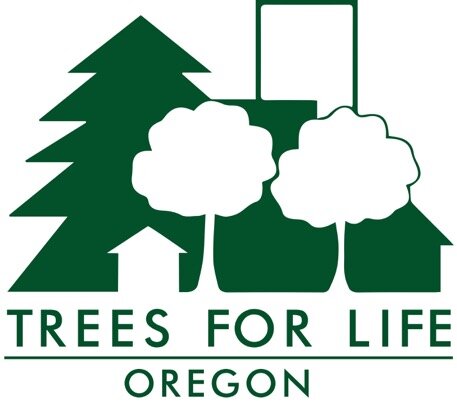Keeping Rare Trees Like the China-fir Helps Keep Portland Weird
By Jim Gersbach, Trees for Life Oregon
Traditionally people in China wanted a coffin made from the wood of the China- fir (Cunninghamia lanceolata). As development pressure makes modest-sized homes in less expensive neighborhoods attractive purchases for those seeking to build multiple-unit housing or big-box homes, mature specimen trees like this China-fir in North Portland may be heading for the graveyard themselves.
Although China-fir grows quite well in Portland—it makes a great yard or park tree—examples of it here are rare. Not a true fir at all (thus the hyphen in its name), it is found only in China, Laos, and Vietnam. It’s the only species in its genus apart from a closely related species on Taiwan, which some botanists consider a variety. China-firs are in the venerable cypress family to which our native western red-cedars, incense-cedars, and Port Orford-cedars also belong. Up close, though, China-fir looks more akin to monkey puzzle trees minus the barbs along the trunk. And the bark of China-fir is brown and fibrous; the bark of an old monkey puzzle tree is dark gray and similar to an elephant's leg.
Finding ways to identify rare, significant, mature trees and secure heritage tree status for them may be one way Portlanders can help ensure that some will escape the wave of redevelopment washing over our neighborhoods.
Not every large tree is worth saving. Some have structural weaknesses from poor pruning, while others such as birch may be near the end of their normal lifespan or at high risk for lethal insects or disease. Still others, like tree of heaven, are invasive thugs.
But we can't "keep Portland weird" if we allow our healthy botanical rarities to slip away without any effort to preserve them where feasible. Failure to do so dooms Portland eventually to look like any American suburb with the same mass-produced collection of dogwoods, maples, and mugo pines. Designing new housing units around healthy large-form trees like China-firs—which can reach 160 feet—preserves the botanical diversity and distinctiveness of the neighborhoods they grace. Keeping these trees in place also enhances the quality of life and sense of place for current and future nearby residents. Isn't this worth a little consideration from the City as it works with developers to shape our future built environment?

